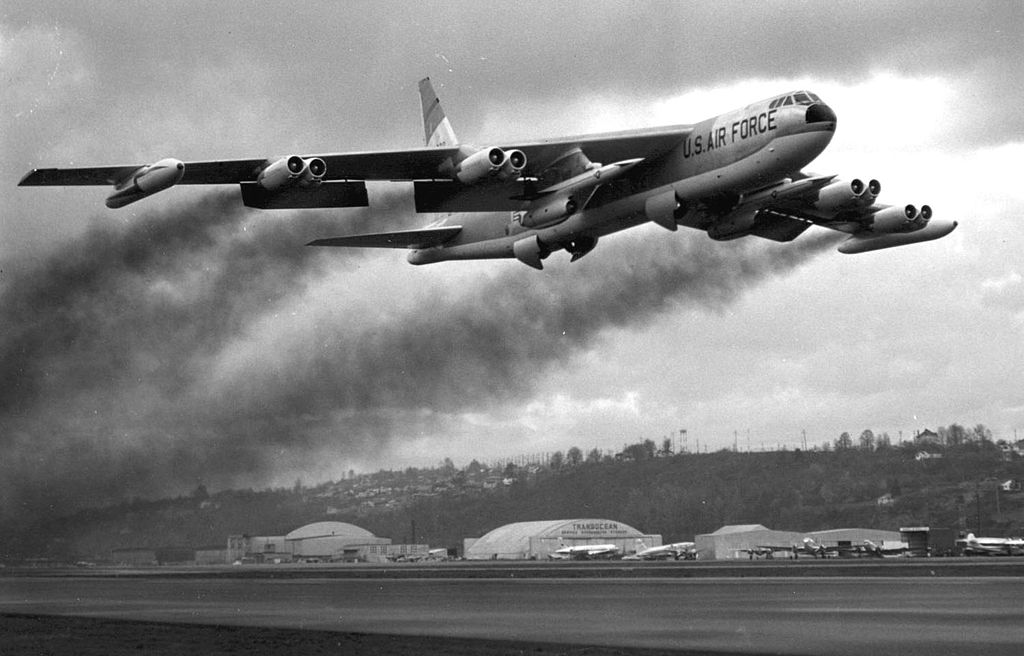
ADVERTISEMENT - CONTINUE READING BELOW
18. Destruction of the B-52 fleet from 1991-2001
Not all of the B-52s in the Air Force inventory were destined for destruction as a result of START 1. The service retained the final variant of the airplane, the B-52H, designated as a conventional bomber. A few of the remaining B-52G variant were distributed as non-flying museum displays under the terms of the treaty. The remaining 365 B-52s were sent to Davis-Monthan Air Force Base, where they were then relocated to AMRG. After arriving, and in accordance with the schedule established by the START agreement, the airplanes were stripped of all serviceable parts. They were then placed into positions in the fields at AMRG. There, the aircraft awaited the services of a giant crane which served as a sort of guillotine to break up the aircraft. The airframes were sliced into separate parts.
A 13,000-pound “blade” was dropped onto the aircraft. Each wing was removed, followed by the fuselage being sliced into three pieces. The aircraft then remained in place for the ensuing three months, a provision in the agreement which allowed the Russians to confirm compliance with the terms of the treaty. After it was determined the “guillotine” was destructive of potentially reusable materials, according to some reports, rescue saws were used to cut up the retired airplanes more efficiently. After confirmation by the Russians, the remains of the former bombers were sold as scrap. The process of destroying the bulk of the B-52 bomber fleet continued into 2001. The US Air Force retained an inventory of less than 100 B-52H variants, yet they still had a significant role to play in American military operations.

